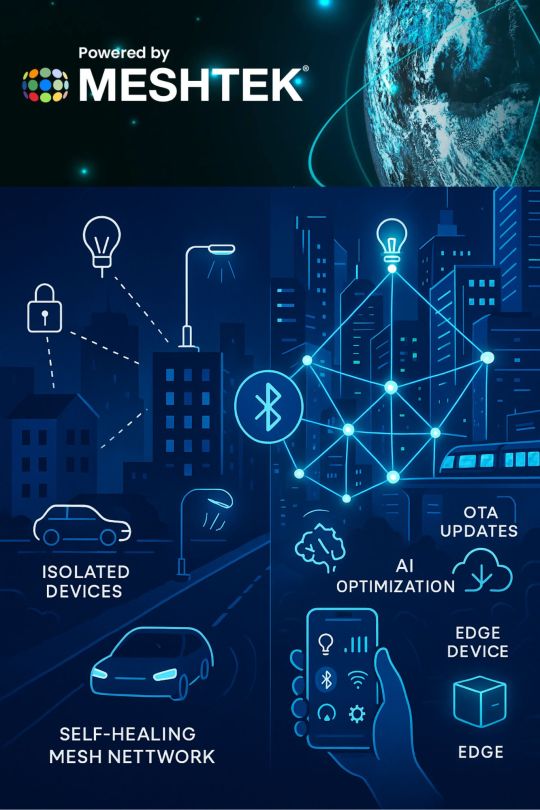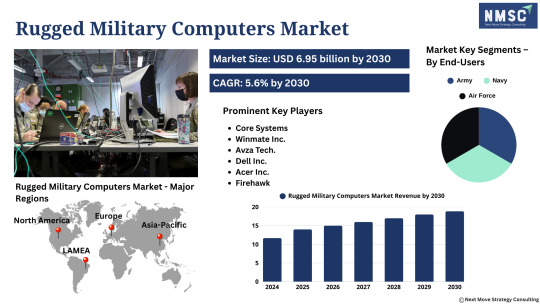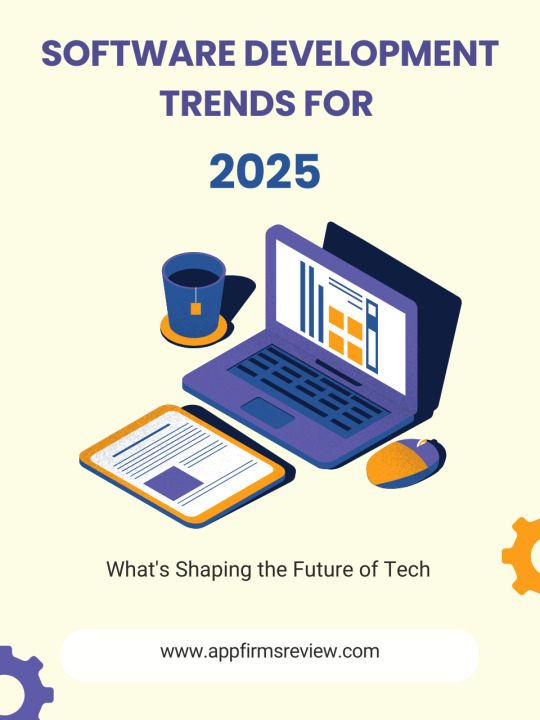#edgecomputing.
Explore tagged Tumblr posts
Text
#AAEON#powered#nextgen#embeddedapplications#energy efficiency#displays#IoT#industrial#automation#edgecomputing.#electronicsnews#technologynews
0 notes
Text
From Isolation to Intelligence: MeshTek’s Bluetooth Mesh in Action

MeshTek upgrades disconnected devices into a smart, responsive ecosystem using its advanced Bluetooth Mesh Networking. With AI optimization, OTA updates, and edge computing, it delivers seamless, secure, and scalable IoT connectivity for modern infrastructure.
#BluetoothMeshNetworking#MeshTek#SmartInfrastructure#AIOptimization#SelfHealingNetwork#EdgeComputing#OTAFirmwareUpdates#IoTInnovation#MeshNetworkTechnology#ConnectedEcosystems#SmartCitySolutions#IndustrialAutomation#IoTWithMeshTek
1 note
·
View note
Text
Uncovering the Real ROI: How Data Science Services Are Driving Competitive Advantage in 2025
Introduction
What if you could predict your customer’s next move, optimize every dollar spent, and uncover hidden growth levers—all from data you already own? In 2025, the real edge for businesses doesn’t come from owning the most data, but from how effectively you use it. That’s where data science services come in.
Too often, companies pour resources into data collection and storage without truly unlocking its value. The result? Data-rich, insight-poor environments that frustrate leadership and slow innovation. This post is for decision-makers and analytics leads who already know the fundamentals of data science but need help navigating the growing complexity and sophistication of data science services.
Whether you’re scaling a data team, outsourcing to a provider, or rethinking your analytics strategy, this blog will help you make smart, future-ready choices. Let’s break down the trends, traps, and tangible strategies for getting maximum impact from data science services.
Section 1: The Expanding Scope of Data Science Services in 2025
Gone are the days when data science was just about modeling customer churn or segmenting audiences. Today, data science services encompass everything from real-time anomaly detection to predictive maintenance, AI-driven personalization, and prescriptive analytics for operational decisions.
Predictive & Prescriptive Modeling: Beyond simply forecasting, top-tier data science service providers now help businesses simulate outcomes and optimize strategies with scenario analysis.
AI-Driven Automation: From smart inventory management to autonomous marketing, data science is fueling a new level of automation.
Real-Time Analytics: With the rise of edge computing and faster data streams, businesses expect insights in seconds, not days.
Embedded Analytics: Service providers are helping companies build intelligence directly into products, not just dashboards.
These services now touch nearly every business function—HR, operations, marketing, finance—with increasingly sophisticated tools and technologies.
Section 2: Choosing the Right Data Science Services Partner
Selecting the right partner is arguably more critical than the tools themselves. A good fit ensures strategic alignment, faster time to value, and fewer rework cycles.
Domain Expertise: Don’t just look for technical brilliance. Look for providers who understand your industry’s unique metrics, workflows, and regulations.
Tech Stack Compatibility: Ensure your provider is fluent in your existing environment—whether it’s Snowflake, Databricks, Azure, or open-source tools.
Customization vs. Standardization: The best data science services strike a balance between reusable IP and tailored solutions.
Transparency & Collaboration: Look for vendors who co-build with your internal teams, not just ship over-the-wall solutions.
Real-World Example: A retail chain working with a generic vendor struggled with irrelevant models. Switching to a vertical-focused data science services provider with retail-specific datasets improved demand forecasting accuracy by 22%.
Section 3: Common Pitfalls That Derail Data Science Projects
Despite strong intent, many data science initiatives still fail to deliver ROI. Here are common traps and how to avoid them:
Lack of a Clear Business Goal: Many teams jump into modeling without aligning on the problem statement or success metrics.
Dirty or Incomplete Data: If your foundational data layers are unstable, no algorithm can fix the problem.
Overemphasis on Accuracy: A highly accurate model that no one uses is worthless. Focus on adoption, interpretability, and stakeholder buy-in.
Skills Gap: Without a strong bridge between data scientists and business users, insights never make it into workflows.
Solution: The best data science services include data engineers, business translators, and UI/UX designers to ensure end-to-end delivery.
Section 4: Unlocking Hidden Opportunities with Advanced Analytics
In 2025, forward-thinking firms are using data science services not just for problem-solving, but for uncovering growth levers:
Customer Lifetime Value Optimization: Predictive models that help decide how much to spend and where to focus retention.
Dynamic Pricing: Real-time adjustment based on demand, inventory, and competitor moves.
Fraud Detection & Risk Management: ML models can now flag anomalies within seconds, preventing millions in losses.
ESG & Sustainability Metrics: Data science is enabling companies to report and optimize environmental and social impact.
Real-World Use Case: A logistics firm used data science services to optimize delivery routes using real-time weather, traffic, and vehicle condition data, reducing fuel costs by 19%.
Section 5: How to Future-Proof Your Data Science Strategy
Data science isn’t a one-time investment—it’s a moving target. To remain competitive, your strategy must evolve.
Invest in Data Infrastructure: Cloud-native platforms, version control for data, and real-time pipelines are now baseline requirements.
Prioritize Model Monitoring: Drift happens. Build feedback loops to track model accuracy and retrain when needed.
Embrace Responsible AI: Ensure fairness, explainability, and data privacy compliance in all your models.
Build a Culture of Experimentation: Foster a test-learn-scale mindset across teams to embrace insights-driven decision-making.
Checklist for Evaluating Data Science Service Providers:
Do they offer multi-disciplinary teams (data scientists, engineers, analysts)?
Can they show proven case studies in your industry?
Do they prioritize ethics, security, and compliance?
Will they help upskill your internal teams?
Conclusion
In 2025, businesses can’t afford to treat data science as an experimental playground. It’s a strategic function that drives measurable value. But to realize that value, you need more than just data scientists—you need the right data science services partner, infrastructure, and mindset.
When chosen wisely, these services do more than optimize KPIs—they uncover opportunities you didn’t know existed. Whether you’re trying to grow smarter, serve customers better, or stay ahead of risk, the right partner can be your unfair advantage.
If you’re ready to take your analytics game from reactive to proactive, it may be time to evaluate your current data science service stack.
#DataScience2025#FutureOfAnalytics#AdvancedAnalytics#AITransformation#MachineLearningModels#PredictiveAnalytics#PrescriptiveAnalytics#RealTimeData#EdgeComputing#DataDrivenDecisions#RetailAnalytics#SupplyChainOptimization#SmartLogistics#CustomerInsights#DynamicPricing#FraudDetection#SaaSAnalytics#MarketingAnalytics#ESGAnalytics#HRAnalytics#DataEngineering#MLOps#SnowflakeDataCloud#AzureDataServices#Databricks#BigQuery#PythonDataScience#CloudDataPlatform#DataPipelines#ModelMonitoring
0 notes
Text

𝑺𝒑𝒆𝒄 𝑴𝒂𝒕𝒕𝒆𝒓𝒔: 𝑾𝒉𝒂𝒕 𝑴𝒂𝒌𝒆𝒔 𝑴𝒊𝒍𝒊𝒕𝒂𝒓𝒚 𝑪𝒐𝒎𝒑𝒖𝒕𝒆𝒓𝒔 𝑴𝒊𝒔𝒔𝒊𝒐𝒏-𝑹𝒆𝒂𝒅𝒚?
𝑮𝒓𝒂𝒃 𝒂 𝑭𝑹𝑬𝑬 𝑺𝒂𝒎𝒑𝒍𝒆: https://www.nextmsc.com/rugged-military-computers-market-ad3296/request-sample
Not all rugged tech is created equal. In military contexts, failure is not an option. That’s why today’s rugged military computers offer:
1. Encrypted, tamper-proof storage systems;
2. Real-time battlefield analytics & situational awareness;
3. Edge processing capabilities in remote locations;
4. Seamless integration with UAVs, drones, and targeting systems;
5. Devices must not only survive combat—they must thrive in it.
𝑨𝒄𝒄𝒆𝒔𝒔 𝑭𝒖𝒍𝒍 𝑹𝒆𝒑𝒐𝒓𝒕: https://www.nextmsc.com/report/rugged-military-computers-market-ad3296
𝑲𝒆𝒚 𝒎𝒂𝒏𝒖𝒇𝒂𝒄𝒕𝒖𝒓𝒆𝒓𝒔 like General Dynamics, Dell Technologies (Rugged Division), and Leonardo DRS are equipping militaries with battle-tested hardware that connects everything from drone swarms to portable radars.
0 notes
Text
#Elektrobit#SoftwareDefinedVehicle#SDV#AutomotiveSoftware#AUTOSAR#EBtresos#EdgeComputing#ConnectedVehicles#MobilityInnovation#MichaelRobertson#AutomotiveTech#ZoneArchitecture#electricvehiclesnews#evtimes#autoevtimes#evbusines
0 notes
Text
#EngineeringInnovation#AIoT#EdgeComputing#Automation#EMobility#TechEcosystem#ArrowElectronics#MadeInIndia#powerelectronics#powermanagement#powersemiconductor
0 notes
Text
How AI Agents Are Transforming Sports Performance & Injury Prevention 🏃♀️
Today’s athletes aren’t just training harder — they’re training smarter, thanks to AI-powered solutions.
At CIZO, we recently built a smart Golf Performance Tracking app that does more than just measure swing speed. It’s designed to:
✅ Detect a player’s posture using computer vision ✅ Predict shot distance with machine learning models ✅ Analyze performance trends in real-time ✅ Guide optimal movements to prevent injuries ✅ Even provide feedback on how to hold the golf stick properly
Behind the scenes, it's a combination of:
IoT wearables for biometric tracking
ML algorithms for performance insights
Computer vision for precise motion analysis
This is just one example of how AI agents are reshaping sports training—making it more data-driven, preventive, and personalized.
🚀 If you're exploring smarter tech in sports or fitness, it's time to rethink what’s possible.
#aiinsports#innovation#cizotechnology#ios#techinnovation#appdevelopment#iosapp#mobileappdevelopment#app developers#mobileapps#ai#SportsTech#machinelearning#generativeai#deeplearning#bigdata#artificialintelligence#datascience#iot#iot platform#iotsolutions#smartcities#edgecomputing#iot applications
0 notes
Link
#AIAdoption#edgecomputing#Industry4.0#operationalefficiency#PredictiveMaintenance#RegionalTechStrategy#SmartManufacturing#supplychaininnovation
0 notes
Text
Software Development Trends for 2025 – What's Shaping the Future of Tech

Explore the top software development trends for 2025, including AI, low-code platforms, DevOps evolution, and more. Stay updated with the latest innovations driving the tech world forward in this detailed blog by AppFirmsReview.
#SoftwareDevelopment#TechTrends2025#AIinDevelopment#LowCode#CloudComputing#AppFirmsReview#EdgeComputing#CrossPlatform
0 notes
Text
Top Services Offered by an IoT Development Company

From smart sensors to real-time dashboards and cloud integrations, these companies enable businesses to harness the full potential of the Internet of Things. An IoT Development Company builds intelligent, connected solutions that bridge the gap between physical devices and digital intelligence.
0 notes
Text
#edge AI#robotics#NVMe#AIStorage#AutonomousTech#HighSpeedData#DataIngestion#EdgeComputing#AIInfrastructure#Timestech#electronicsnews#technologynews
0 notes
Text
Powering Real-Time Control with Smarter IoT App Development

Advanced IoT app development enables real-time monitoring and control across smart buildings, lighting, greenhouses, and HVAC systems — all powered by a secure Bluetooth Mesh network. With edge processing, OTA updates, and low-latency communication, this scalable solution delivers seamless automation and intelligent insights from a single mobile interface.
#IoTAppDevelopment#BluetoothMesh#SmartAutomation#EdgeComputing#IndustrialIoT#SmartCitySolutions#ConnectedInfrastructure#MeshNetworking#MobileIoTControl#ScalableIoT#MeshTekSolutions#SmartEnvironment
1 note
·
View note
Text
EMPOWERING TELECOM & INDUSTRY WITH ADAPTIVE AI INTELLIGENCE
#IndustrialTransformation#TelecomInfrastructure#edgecomputing#private5g#iiot#networkautomation#smartindustries#Built_On_Intel#IntelPartner#Intel
0 notes
Text
Cloud and edge computing are revolutionizing the landscape of software testing by introducing unprecedented scalability, flexibility, and speed. Traditional testing environments often struggle with resource limitations and slow deployment cycles. However, cloud computing allows testing teams to create on-demand, scalable environments that mimic real-world usage more accurately. This not only speeds up the testing process but also reduces infrastructure costs significantly.
Cloud-based testing platforms offer continuous integration and continuous delivery (CI/CD) pipelines, enabling real-time testing across multiple devices, operating systems, and browsers. This ensures faster feedback loops, better collaboration among development teams, and quicker release cycles. Moreover, cloud testing supports automation at scale, allowing repetitive tests to be executed across large datasets with minimal human intervention.
Edge computing adds another layer of innovation by bringing testing closer to the source of data generation. With the proliferation of IoT and mobile devices, edge computing enables localized testing in real-time environments, which is essential for latency-sensitive applications. It helps test scenarios like real-time analytics, smart sensors, and autonomous systems, where instant decision-making is critical.
Together, cloud and edge computing empower QA teams to simulate complex user scenarios, improve test accuracy, and identify bugs earlier in the development process. They also enhance security testing by providing isolated test environments and more realistic attack simulations.
As organizations move towards agile and DevOps methodologies, integrating cloud and edge technologies into software testing has become more than just a trend—it’s a necessity. These technologies are not only optimizing performance and efficiency but are also shaping the future of quality assurance in the digital age.
0 notes
Text
Transforming Software Testing with Cloud and Edge Computing
Cloud and edge computing are revolutionizing software testing by providing scalable, flexible, and low-latency environments. This hybrid model allows teams to test software across diverse devices and networks in real time, speeding up delivery cycles and enhancing application quality. While cloud infrastructure offers broad scalability and cost efficiency, edge computing ensures rapid feedback and localized validation. Together, they enable a more agile, responsive, and future-ready approach to software testing in an increasingly complex digital landscape.
#CloudComputing#EdgeComputing#SoftwareTesting#RealTimeTesting#ContinuousDelivery#TestAutomation#TechInnovation#ScalableTesting
0 notes